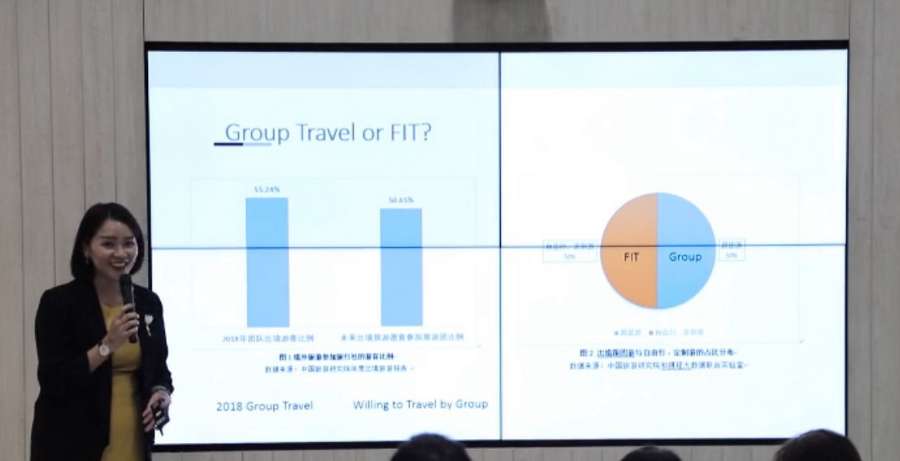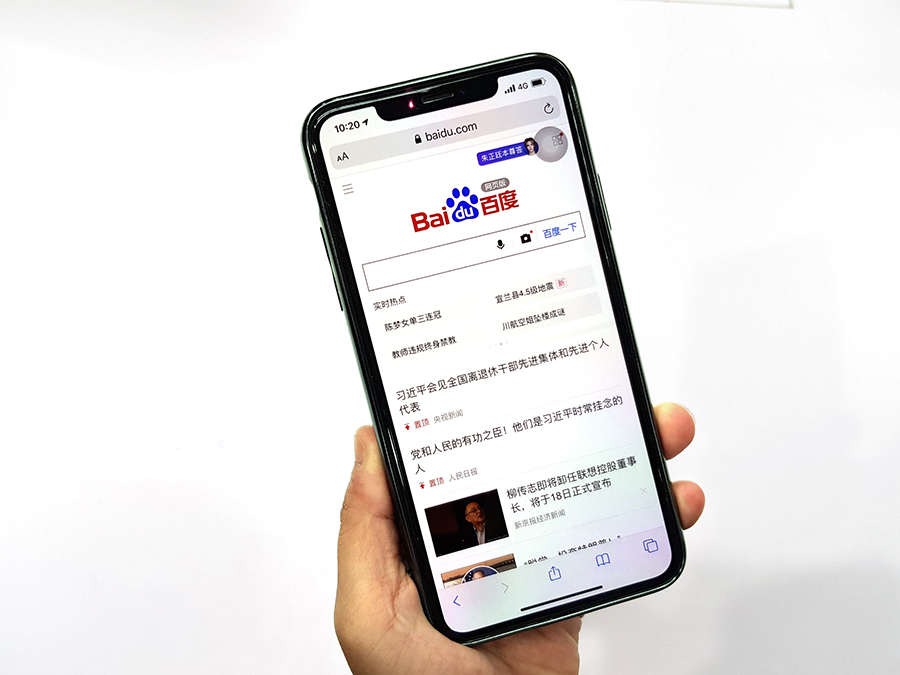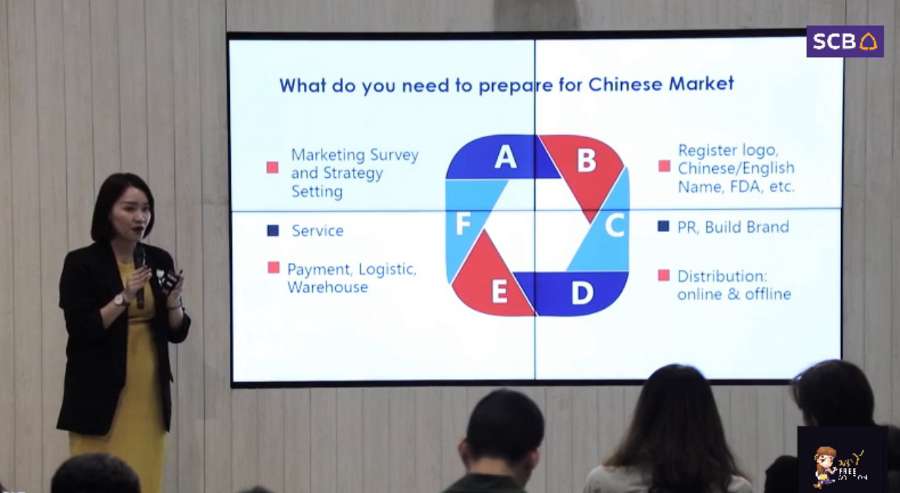I WANT
RELATED LINKS
I WANT
RELATED LINKS
RELATES LINKS
I WANT
RELATES LINKS
Services
Related Links
Use and Management of Cookies
We use cookies and other similar technologies on our website to enhance your browsing experience. For more information, please visit our Cookies Notice.
- Personal Banking
- Stories & Tips
- BUSINESS MAKER
- Create opportunities for Thai SMEs to market for Chinese tourists
- Personal Banking
- ...
- Create opportunities for Thai SMEs to market for Chinese tourists
Create opportunities for Thai SMEs to market for Chinese tourists
15-12-2019
COFFEE TALK SERIES EP#3
China has been important as a business partner with Thailand for many decades. And recently this is still increasingly important as a large market for the Thai tourism industry with over ten million Chinese tourists visiting Thailand each year. Susan Yongjun Su, CEO of Lert Global Group, joined the Coffee Talk Series seminar to educate SME entrepreneurs on opportunities and ways to do business with Chinese tourists.

Chinese tourist market overview
Thailand is the number one destination in the minds of Chinese tourists. Because of the limited number of holidays 65% of Chinese tourists prefer to travel to nearby countries like Japan or Southeast Asian countries and over 60% will like to travel to the seaside and various islands. Thailand is still popular among Chinese people over Japan and other Southeast Asian countries. Viewed from the last Chinese New Year period. Chinese also come to visit Thailand the most. Therefore, the Chinese are the largest group of tourists in the Thai tourism market. In 2018, more than 10.35 million Chinese tourists came to Thailand, accounting for 27.5% of all tourists coming to Thailand. And from the first half of the year 2019, the number of Chinese tourists to Thailand is 5.64 million, therefore it is expected that in the year 2019 there will be a total of 11.15 million Chinese tourists, an increase of 5.87% from last year.
Among tourists of all nations who come to Thailand, Chinese tourists spend the most with 536,278 million baht, most of which is spent on shopping and leisure, such as spas, cruises, trips, etc.

When and where do Chinese tourists come to visit?
The top 10 tourist destinations that Chinese people like are Phuket, Bangkok, Chiang Mai, Koh Samui, Krabi, Koh Chang, Hua Hin, Pai, Koh Samed, Koh Lipe. More likely to be Younger Generation (Gen Y, Gen Z). From the information of CTrip online ticket booking platform Shows trends in the GenY GenZ group that will not plan, a period of purchase of plane tickets Reserve the hotel in advance 1-3 days before traveling only. The trend can be a FIT - Free Independent Traveler or a local tour purchase. Therefore, marketing must focus on grouping FIT more than before, with the market group tourists only
On average, Chinese tourists spend 8 days traveling in Thailand. If coming 1-3 days, they will travel to only one city like Phuket, Bangkok, Chiang Mai. If coming 4-6 days, will travel to 2 cities such as Southern + Bangkok, Northern. + Bangkok and if there are more time, then will expand to visit more small secondary cities such as Nan, Loei, Pai, etc., which is a new trend called Deep Traveling

The reason that Chinese people like to come to Thailand is that the weather is good for traveling all year, easy to travel, have a direct flight, short flight, easy visa, have Visa on Arrival, cheap cost. Friendly price, good value, good service, beautiful tourist attractions and influenced by movies/series Therefore have a trail trip
There are 2 peak periods for Chinese people coming to Thailand, namely the Chinese New Year Festival in February. And during the months of July-August which is during school holidays. Most of the tourists coming here are family trips. It is an ideal opportunity for entrepreneurs to do family promotions to attract this group of tourists.

Who are Chinese tourists and where they coming from?
Most of the Chinese who travel overseas are those who live in the Super 1st Tier, New Tier 1 * cities, most from Guangdong. For being the most populous province There are many international airports in Guangzhou, Shenzhen, as well as nearby cities like Hong Kong, Macau. Resulting in a lot of flights, convenient to travel, which is the most GenY group (born in the 1980s), 29%, followed by the GenZ group (born 1990s), 18% and GenX (born 1970s), 17%. Dare to spend a lot Buy a lot of high-value items, Luxury Brand.
* China uses the tier system to divide cities According to economy size, Super 1st Tier 4 cities are Beijing, Shanghai, Guangzhou, Shenzhen, New Tier 1 15 cities such as Chengdu, Hangzhou, Wuhan, Chongqing, Nanjing, etc., Tier 2 30 cities such as Xiamen, Fuzhou, Wuxii, Kunming, Harbin, etc. And Tier 3 70 cities such as Weifang, Yangzhou, Guilin, Shanya, etc.

Online platform Gateway to the Chinese tourists
In making marketing plans to penetrate Chinese tourists through online platforms can be divided into 2 groups which are tourism group platform that directly contacts with tourists’ group and online marketing platform to create Visibility in Chinese minds
Popular tourist group platforms such as C-Trip, Qunar, Figgy, these three are used to book plane tickets, hotels, etc. With CTrip having a mature client age 30 and over, Figgy. The client base is Gen Y and we can buy Ads in these 3 platforms. And another very important platform is Mafengwo, which is UGC (user-generated content). The platform is like Tripadvisor, sharing experiences, reviews, accommodation, restaurants, travel souvenirs, tours that most Chinese tourists read. This Mafenwo can be used for both Ad buying and using KOL (Key Opinion Leader) to create content reviews.

The platform to create Visibility in the Chinese mind, including 3W + 360 Communication
- Create accounts and content, increase traffic / follower Promote on 3W: Chinese Website + Wechat (= Line Official + Facebook) + Weibo (= Twitter + IG).
- Performing SEM and SEO via Baidu Search Engine, A. Baidu Optimization and B. Zhihu Q&A.
- Using KOL (Key Opinion Leader) to create content reviews on Wechat, Weibo, Taobao Live, Dou Yin (Tiktok) and RED (Little Red Book with Chinese name Xiaohongshu). RED is an important sharing platform for the Chinese market Before selling products or services to Chinese people Must be sure that RED is a big part of the marketing plan. Because it is creating credibility of all products among consumers and distributors

Summary of ways to win the Chinese market
Susan concluded that the approach to preparing to penetrate the Chinese market is 2 Phrase. The first phrase in Thailand, must prepare tourists to see product visibility in Thailand, see reviews on Social Media and know where to buy them. The second phase is when going into the Chinese market. Requires market survey and strategy.
Register the copyright of the brand/logo in both Chinese / English to prevent copying later, including requesting various licenses. Do public relations, create a brand, become known. Contact distributors both Online and Offline. Place payment systems, stock delivery, finish with after-sales services.
